James Wang
Synthetic CT Generation from Time-of-Flight Non-Attenutaion-Corrected PET for Whole-Body PET Attenuation Correction
Apr 10, 2025Abstract:Positron Emission Tomography (PET) imaging requires accurate attenuation correction (AC) to account for photon loss due to tissue density variations. In PET/MR systems, computed tomography (CT), which offers a straightforward estimation of AC is not available. This study presents a deep learning approach to generate synthetic CT (sCT) images directly from Time-of-Flight (TOF) non-attenuation corrected (NAC) PET images, enhancing AC for PET/MR. We first evaluated models pre-trained on large-scale natural image datasets for a CT-to-CT reconstruction task, finding that the pre-trained model outperformed those trained solely on medical datasets. The pre-trained model was then fine-tuned using an institutional dataset of 35 TOF NAC PET and CT volume pairs, achieving the lowest mean absolute error (MAE) of 74.49 HU and highest peak signal-to-noise ratio (PSNR) of 28.66 dB within the body contour region. Visual assessments demonstrated improved reconstruction of both bone and soft tissue structures from TOF NAC PET images. This work highlights the effectiveness of using pre-trained deep learning models for medical image translation tasks. Future work will assess the impact of sCT on PET attenuation correction and explore additional neural network architectures and datasets to further enhance performance and practical applications in PET imaging.
Logarithmic Regret for Nonlinear Control
Jan 17, 2025Abstract:We address the problem of learning to control an unknown nonlinear dynamical system through sequential interactions. Motivated by high-stakes applications in which mistakes can be catastrophic, such as robotics and healthcare, we study situations where it is possible for fast sequential learning to occur. Fast sequential learning is characterized by the ability of the learning agent to incur logarithmic regret relative to a fully-informed baseline. We demonstrate that fast sequential learning is achievable in a diverse class of continuous control problems where the system dynamics depend smoothly on unknown parameters, provided the optimal control policy is persistently exciting. Additionally, we derive a regret bound which grows with the square root of the number of interactions for cases where the optimal policy is not persistently exciting. Our results provide the first regret bounds for controlling nonlinear dynamical systems depending nonlinearly on unknown parameters. We validate the trends our theory predicts in simulation on a simple dynamical system.
Moonshine: Speech Recognition for Live Transcription and Voice Commands
Oct 21, 2024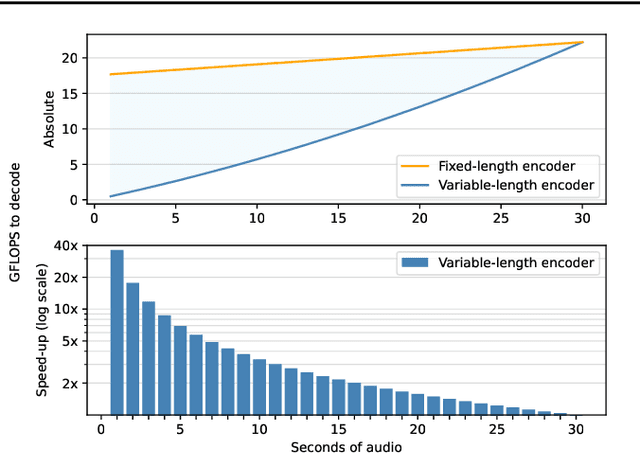


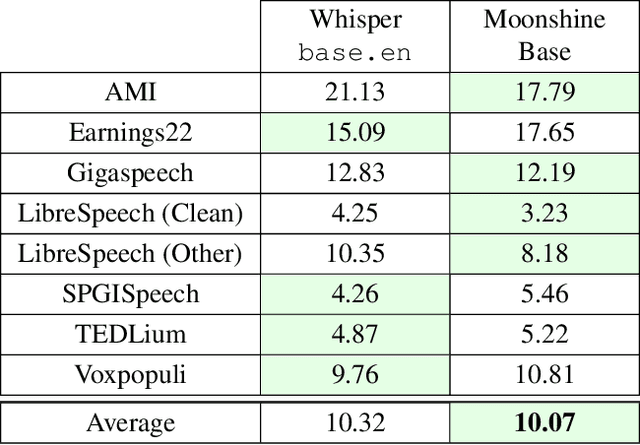
Abstract:This paper introduces Moonshine, a family of speech recognition models optimized for live transcription and voice command processing. Moonshine is based on an encoder-decoder transformer architecture and employs Rotary Position Embedding (RoPE) instead of traditional absolute position embeddings. The model is trained on speech segments of various lengths, but without using zero-padding, leading to greater efficiency for the encoder during inference time. When benchmarked against OpenAI's Whisper tiny.en, Moonshine Tiny demonstrates a 5x reduction in compute requirements for transcribing a 10-second speech segment while incurring no increase in word error rates across standard evaluation datasets. These results highlight Moonshine's potential for real-time and resource-constrained applications.
RAFT: Realistic Attacks to Fool Text Detectors
Oct 04, 2024



Abstract:Large language models (LLMs) have exhibited remarkable fluency across various tasks. However, their unethical applications, such as disseminating disinformation, have become a growing concern. Although recent works have proposed a number of LLM detection methods, their robustness and reliability remain unclear. In this paper, we present RAFT: a grammar error-free black-box attack against existing LLM detectors. In contrast to previous attacks for language models, our method exploits the transferability of LLM embeddings at the word-level while preserving the original text quality. We leverage an auxiliary embedding to greedily select candidate words to perturb against the target detector. Experiments reveal that our attack effectively compromises all detectors in the study across various domains by up to 99%, and are transferable across source models. Manual human evaluation studies show our attacks are realistic and indistinguishable from original human-written text. We also show that examples generated by RAFT can be used to train adversarially robust detectors. Our work shows that current LLM detectors are not adversarially robust, underscoring the urgent need for more resilient detection mechanisms.
MUG: Multi-human Graph Network for 3D Mesh Reconstruction from 2D Pose
May 25, 2022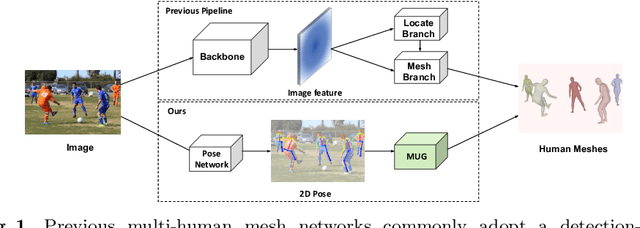
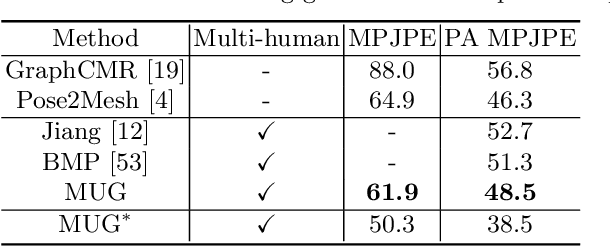


Abstract:Reconstructing multi-human body mesh from a single monocular image is an important but challenging computer vision problem. In addition to the individual body mesh models, we need to estimate relative 3D positions among subjects to generate a coherent representation. In this work, through a single graph neural network, named MUG (Multi-hUman Graph network), we construct coherent multi-human meshes using only multi-human 2D pose as input. Compared with existing methods, which adopt a detection-style pipeline (i.e., extracting image features and then locating human instances and recovering body meshes from that) and suffer from the significant domain gap between lab-collected training datasets and in-the-wild testing datasets, our method benefits from the 2D pose which has a relatively consistent geometric property across datasets. Our method works like the following: First, to model the multi-human environment, it processes multi-human 2D poses and builds a novel heterogeneous graph, where nodes from different people and within one person are connected to capture inter-human interactions and draw the body geometry (i.e., skeleton and mesh structure). Second, it employs a dual-branch graph neural network structure -- one for predicting inter-human depth relation and the other one for predicting root-joint-relative mesh coordinates. Finally, the entire multi-human 3D meshes are constructed by combining the output from both branches. Extensive experiments demonstrate that MUG outperforms previous multi-human mesh estimation methods on standard 3D human benchmarks -- Panoptic, MuPoTS-3D and 3DPW.
Causal Transportability for Visual Recognition
Apr 26, 2022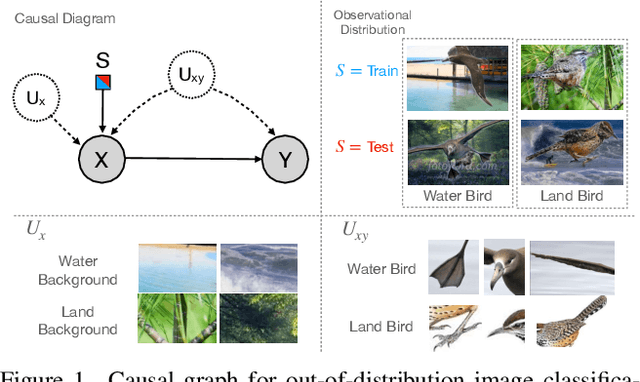
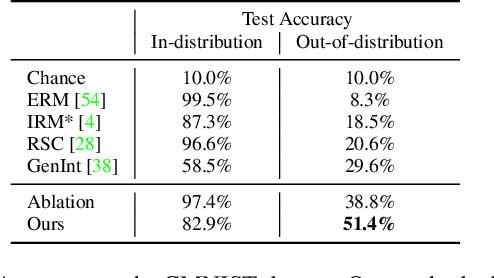
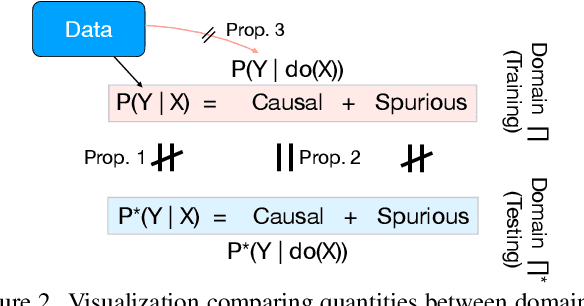
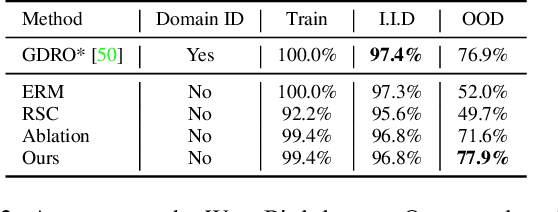
Abstract:Visual representations underlie object recognition tasks, but they often contain both robust and non-robust features. Our main observation is that image classifiers may perform poorly on out-of-distribution samples because spurious correlations between non-robust features and labels can be changed in a new environment. By analyzing procedures for out-of-distribution generalization with a causal graph, we show that standard classifiers fail because the association between images and labels is not transportable across settings. However, we then show that the causal effect, which severs all sources of confounding, remains invariant across domains. This motivates us to develop an algorithm to estimate the causal effect for image classification, which is transportable (i.e., invariant) across source and target environments. Without observing additional variables, we show that we can derive an estimand for the causal effect under empirical assumptions using representations in deep models as proxies. Theoretical analysis, empirical results, and visualizations show that our approach captures causal invariances and improves overall generalization.
With Greater Distance Comes Worse Performance: On the Perspective of Layer Utilization and Model Generalization
Jan 28, 2022

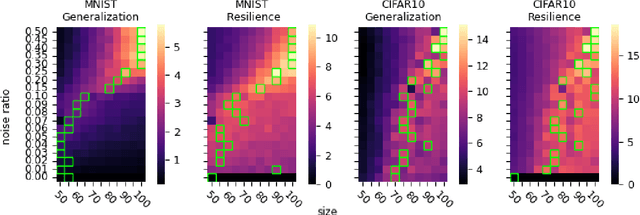
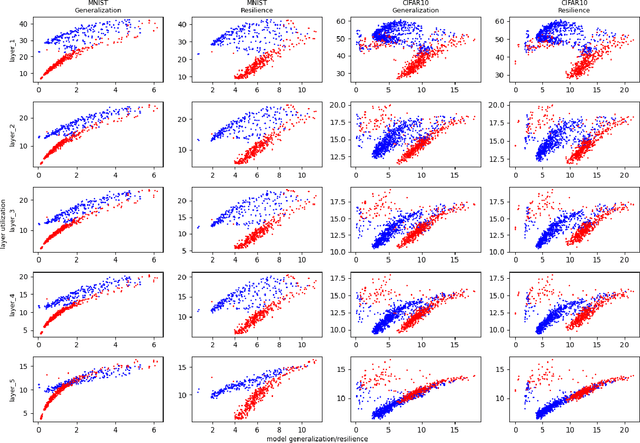
Abstract:Generalization of deep neural networks remains one of the main open problems in machine learning. Previous theoretical works focused on deriving tight bounds of model complexity, while empirical works revealed that neural networks exhibit double descent with respect to both training sample counts and the neural network size. In this paper, we empirically examined how different layers of neural networks contribute differently to the model; we found that early layers generally learn representations relevant to performance on both training data and testing data. Contrarily, deeper layers only minimize training risks and fail to generalize well with testing or mislabeled data. We further illustrate the distance of trained weights to its initial value of final layers has high correlation to generalization errors and can serve as an indicator of an overfit of model. Moreover, we show evidence to support post-training regularization by re-initializing weights of final layers. Our findings provide an efficient method to estimate the generalization capability of neural networks, and the insight of those quantitative results may inspire derivation to better generalization bounds that take the internal structure of neural networks into consideration.
MEBOW: Monocular Estimation of Body Orientation In the Wild
Nov 27, 2020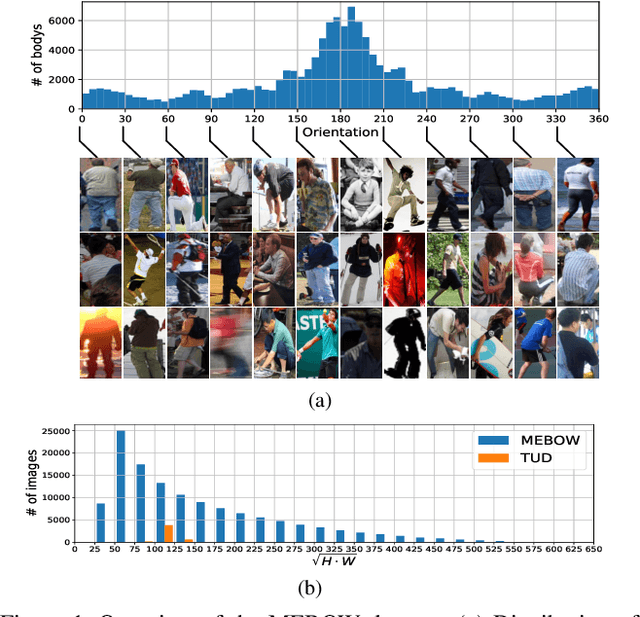

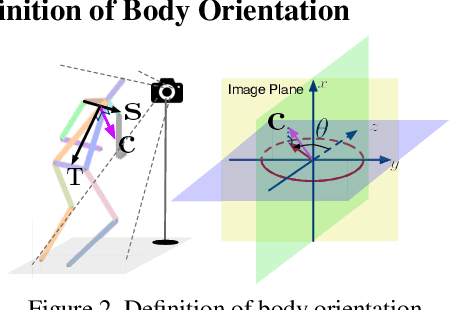
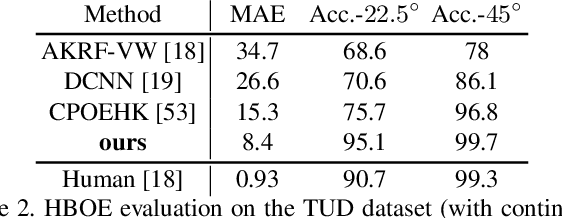
Abstract:Body orientation estimation provides crucial visual cues in many applications, including robotics and autonomous driving. It is particularly desirable when 3-D pose estimation is difficult to infer due to poor image resolution, occlusion or indistinguishable body parts. We present COCO-MEBOW (Monocular Estimation of Body Orientation in the Wild), a new large-scale dataset for orientation estimation from a single in-the-wild image. The body-orientation labels for around 130K human bodies within 55K images from the COCO dataset have been collected using an efficient and high-precision annotation pipeline. We also validated the benefits of the dataset. First, we show that our dataset can substantially improve the performance and the robustness of a human body orientation estimation model, the development of which was previously limited by the scale and diversity of the available training data. Additionally, we present a novel triple-source solution for 3-D human pose estimation, where 3-D pose labels, 2-D pose labels, and our body-orientation labels are all used in joint training. Our model significantly outperforms state-of-the-art dual-source solutions for monocular 3-D human pose estimation, where training only uses 3-D pose labels and 2-D pose labels. This substantiates an important advantage of MEBOW for 3-D human pose estimation, which is particularly appealing because the per-instance labeling cost for body orientations is far less than that for 3-D poses. The work demonstrates high potential of MEBOW in addressing real-world challenges involving understanding human behaviors. Further information of this work is available at https://chenyanwu.github.io/MEBOW/.
Assessing Graph-based Deep Learning Models for Predicting Flash Point
Feb 26, 2020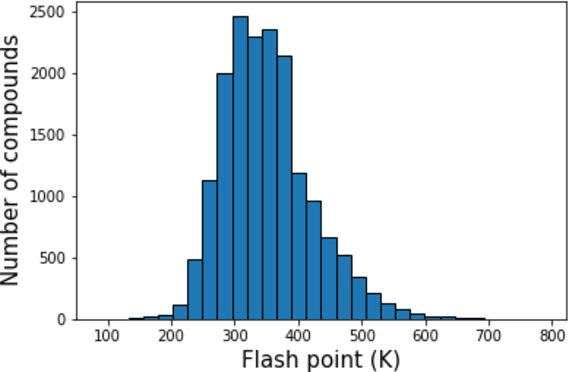
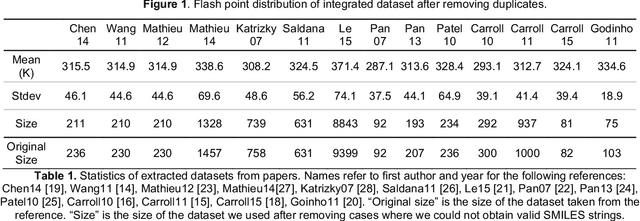
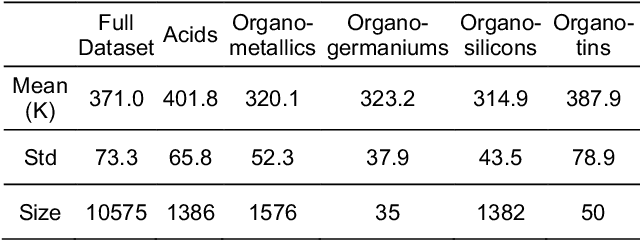
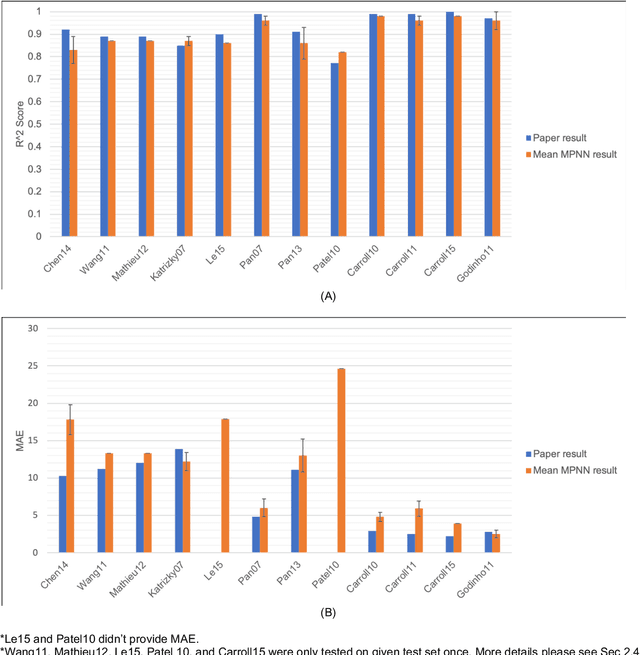
Abstract:Flash points of organic molecules play an important role in preventing flammability hazards and large databases of measured values exist, although millions of compounds remain unmeasured. To rapidly extend existing data to new compounds many researchers have used quantitative structure-property relationship (QSPR) analysis to effectively predict flash points. In recent years graph-based deep learning (GBDL) has emerged as a powerful alternative method to traditional QSPR. In this paper, GBDL models were implemented in predicting flash point for the first time. We assessed the performance of two GBDL models, message-passing neural network (MPNN) and graph convolutional neural network (GCNN), by comparing methods. Our result shows that MPNN both outperforms GCNN and yields slightly worse but comparable performance with previous QSPR studies. The average R2 and Mean Absolute Error (MAE) scores of MPNN are, respectively, 2.3% lower and 2.0 K higher than previous comparable studies. To further explore GBDL models, we collected the largest flash point dataset to date, which contains 10575 unique molecules. The optimized MPNN gives a test data R2 of 0.803 and MAE of 17.8 K on the complete dataset. We also extracted 5 datasets from our integrated dataset based on molecular types (acids, organometallics, organogermaniums, organosilicons, and organotins) and explore the quality of the model in these classes.against 12 previous QSPR studies using more traditional
* 26 pages, 6 tabels, 3 figures
 Add to Chrome
Add to Chrome Add to Firefox
Add to Firefox Add to Edge
Add to Edge